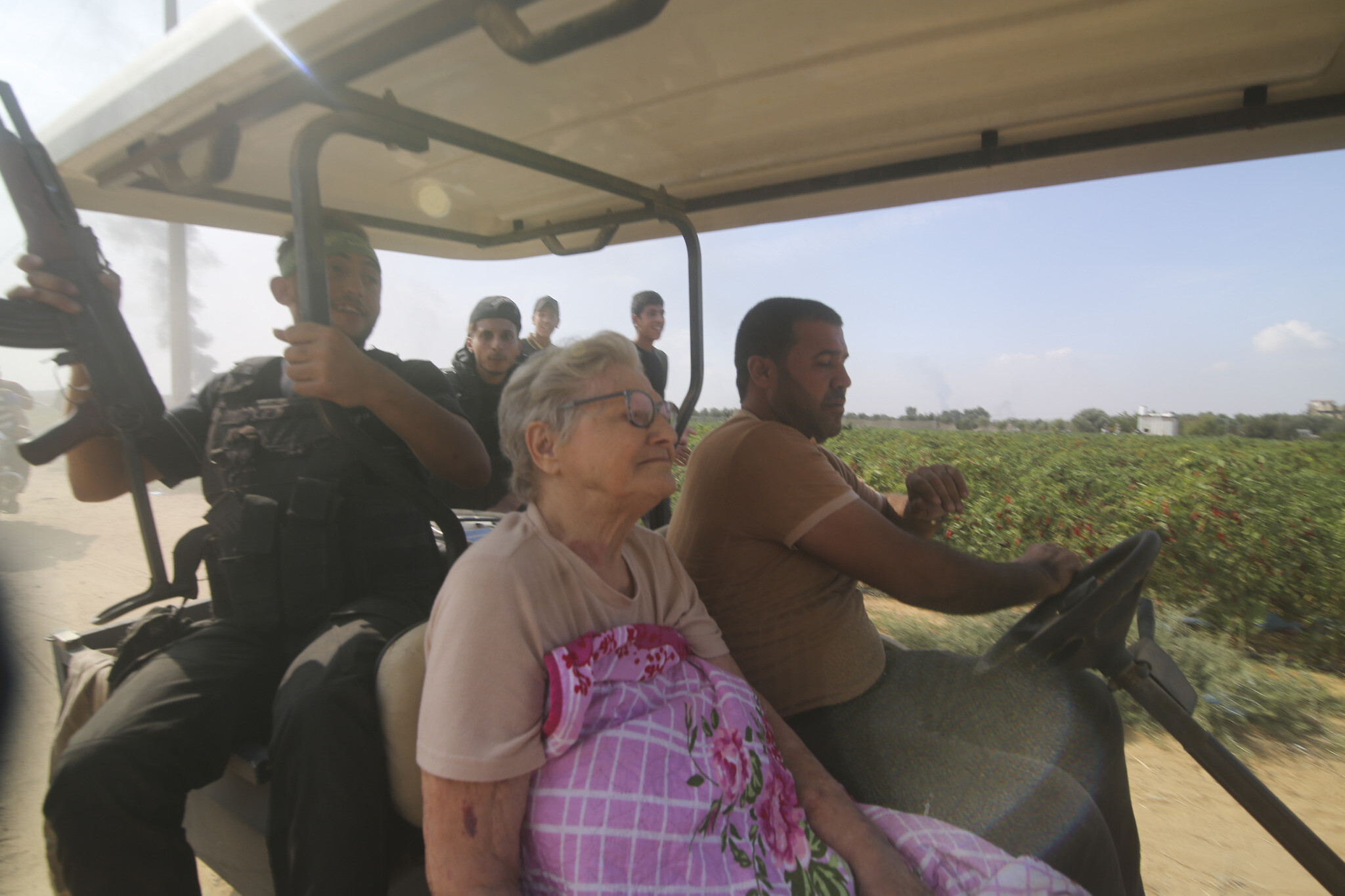By John F. Di Leo, Opinion Contributor
On October 7, 2023, the Hamas terrorists did everything they could think of.
And they had been planning it for years.
Using everything from rifles to rockets, they murdered over a thousand that day, and injured thousands more. In addition, hundreds were kidnapped, taken back into the Gaza Strip as hostages.
Since a few of these kidnap victims have been released, we are now learning more of Hamas’ intentions. We will never objectively, completely understand Hamas, because they are terrorists; their minds don’t work like the minds of decent people. But we must piece together what we know, in order to design an appropriate response.
We must remember, as we listen to what the released hostages say, that they were told what they know for a reason, and they were released first for a reason. This wasn’t out of the terrorists’ kindness; these individuals were released because Hamas believes that their release serves Hamas’ purposes.
Before we study the specific case, we must think of what we already know of the concept of kidnapping.
Criminals normally take hostages for a few specific reasons: usually either to win huge ransoms or to gain time for a safe escape. But what we have seen in a half-century of jihad is that terrorists take hostages for global media attention and to draw out the murders, in service of their key goal, to terrorize the populations. So terrorists don’t use hostages quite the same way that civil, non-political kidnappers use them.
How should we view this circumstance – as tilting toward the side of the rational actor, the kidnapping for ransom, or as tilting toward the terrorist who delights in killing? We must remember that this is Hamas, an organization of brutal terrorists, who have felt particularly empowered since being inexplicably rewarded with the authority of a pseudo-government fifteen years ago.
As we study the facts, we must never forget that we’re talking about Hamas, an organization that drew fame in the Intifada by killing people by dropping huge chunks of concrete on them from above, and getting the moronic press to refer to this brutal method of killing as simply “throwing rocks.”
Now, what have we specifically learned in the weeks since the attack, particularly from the public pronouncements of the hostages who have been released?
A Broad Dispersion
We have learned that Hamas is not holding all these victims in one place; they are scattered all over the Gaza Strip. This means there’s no single holding tank to approach to free everyone, or one single place to avoid when attack military targets across Gaza. Since Israel frankly needs to obliterate much of Gaza in order to remove the ongoing threat to Israel’s very existence, the realization that every military target could hold a hostage adds terrible complexity to their necessary eventual response.
The Tunnel Network
The first hostages released have spoken of a huge network of tunnels, more extensive than previously known (at least by the public; we naturally don’t know exactly what the IDF knows about). This means the terrorists have more freedom of undetected underground movement within the Gaza Strip than we previously thought. Even if Gaza didn’t have hundreds of hostages, this maze of tunnels makes it ever more difficult for Israel to design an effective approach. Israel knew they had to destroy the tunnels; Israel now knows that task will be harder than originally expected.
A False Sense of Care
The first hostages to be released reported that they were well cared-for in captivity, that they ate the same food the terrorists ate, and that they received medical care. This was by design, however. Treat these people relatively well, so that the world gets the impression that Hamas isn’t so bad, and that the hostages will all be fine as long as they’re left alone. If the world believes the hostages are scared but safe in the status quo, then the world won’t want to disrupt the status quo. That belief could dampen Israel’s retaliation and cause other governments to advise restraint. Hamas is counting on it.
The Big Picture
What we onlookers must remember is that these first hostages are not representative of the broader pool of kidnap victims much less the full range of October 7 victims of Hamas’ attack. The safest assumption, in fact, is that some of these victims were given a Potemkin Village treatment – proper medical care, decent food, no interrogations or torture – precisely so that upon release they could honestly tell a story that reflects well upon their captors.
That their experience is most likely not representative of the majority of hostages. Hamas grabbed hundreds of people and took them back to Gaza, then took their time studying who they had kidnapped. It makes sense that they would release foreigners, citizens of nice, squeamish, peaceful nations like the United States, first.
Release Americans who report that conditions aren’t bad, and America will clamor for Israel to show restraint and “not make things worse” for the rest of the prisoners. Do the same for the citizens of some other western countries, and compound the clamor for restraint. Terrorists use psychology; they know that the West is squeamish, and they use that against us.
We must not allow any individual hostage’s story to cause us to forget the big picture here: that Hamas launched a surprise attack that killed and injured thousands of innocent civilians, and that many of the deaths were particularly brutal. There were horrific beatings, beheadings, gang rapes, dismemberment of bodies. Many of the terrorists were given special drugs on October 7, to remove their natural inhibitions so they would be even more violent than usual in following their genocidal orders. They tortured children in front of their parents, parents in front of their children, to maximize the heart-crushing effect.
In short, these islamofascists are terrorists, in every way. We must remember this, and not let our guard down because of anything a released kidnap victim might say.
Already, Israel has hesitated. Rightly concerned about how Hamas was able to perpetrate such a huge attack, far beyond prior expectations of their abilities, Israel has not levied the overwhelming destruction on Gaza that we expected to be immediate. The more tunnels there are, the bigger the attack should be, but after all, the more risk there is that the tunnels house innocent kidnap victims, the more pros and cons Israel must weigh.
There is a traditional rule when criminals take hostages: you assume the hostages are already deceased. Don’t let their presence soften or delay a necessary response.
But that’s much easier said than done. While the terrorists may be pure evil, the hostages are innocent victims; if there’s a way to save them, Israel will try, even at the risk of jeopardizing their larger mission to secure Israel. Because Israel is run by decent people; the Gaza Strip is not.
There will be hostages who speak of decent treatment; there will even be hostages who carry messages back from their friends still in chains. The world must remember that Hamas has chosen what to tell every person they release. This is not an allegation of Stockholm Syndrome; it’s just reality. Hamas has chosen what it shows each prisoner, what it feeds them, and what care it provided to them, all with an eye toward how it would reflect on them afterward. Everything is planned.
The only way for Israel and the rest of the world to look at this situation is to keep the focus on October 7 and the days that followed. Remember the images of the attacks, the blood-soaked rooms, the unidentifiable bodies. Don’t be conned by the more peaceful, more reasonable story that Hamas has engineered their released hostages to share.
There are almost ten million people in Israel who need to be protected from Hamas, as well as from Hamas’ allies Islamic Jihad, Hezbollah, Fatah, and the mullahs in Tehran.
We must pray that Israel keeps their eyes on that ball, and that more easily swayed nations like the United States manage to develop a spine, and firmly stand up for Israel’s right to exist.
That’s what this is about, after all. It’s not about land, or aid, or agreements, or utilities, or food or job opportunities. It’s about the question of whether or not the Jews of Israel are allowed to live.
Hamas’ stated goal – this is in its very charter – is first the elimination of the Jewish state, and then to move on to other targets, such as the United States, because after all, they believe in conquering the entire world for the caliphate.
Israel must do what it has to do, and not allow psychological warfare or milquetoast “allies” to dissuade them.
“Never Again” is now.
Copyright 2023 John F. Di Leo
John F. Di Leo is a Chicagoland-based trade compliance trainer and transportation manager, writer, and actor. A one-time county chairman of the Milwaukee County Republican Party, he has been writing regularly for Illinois Review since 2009. Follow John F. Di Leo on Facebook, Twitter, Gettr or TruthSocial.
A collection of John’s Illinois Review articles about vote fraud, The Tales of Little Pavel, and his 2021 political satires about current events, Evening Soup with Basement Joe, Volumes One and Two, are available, in either paperback or eBook, only on Amazon.
Don’t miss an article! Use the free tool on this page to sign up for notifications whenever Illinois Review publishes new content!









